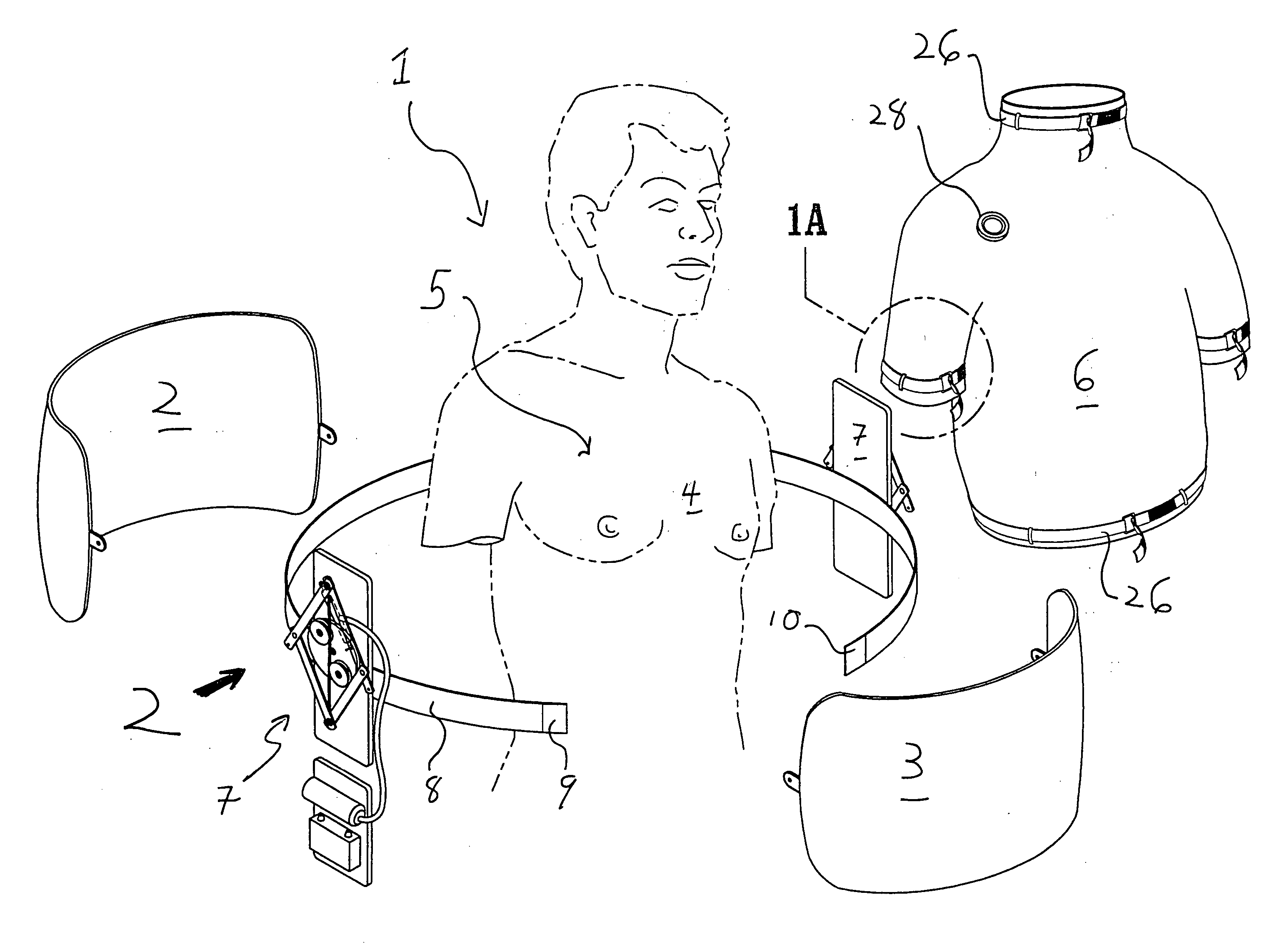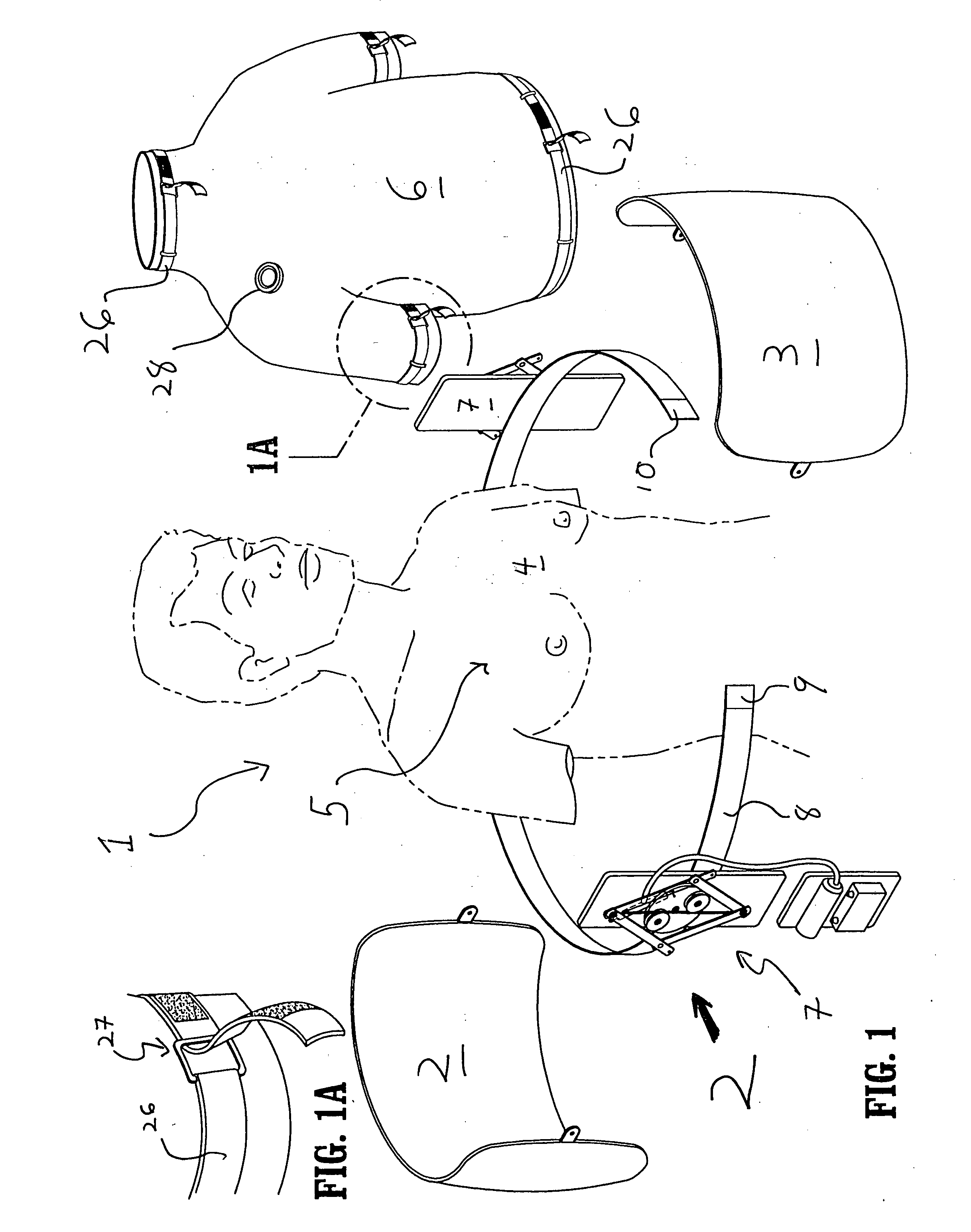Apparatus for mechanically ventilating a patient
a technology for mechanical ventilation and apparatus, applied in the field of physical equipment, can solve the problems of clogging, causing infection, and affecting the use of such a tube, and achieve the effects of improving the quality of life, reducing the risk of dislodging, and reducing the use
- Summary
- Abstract
- Description
- Claims
- Application Information
AI Technical Summary
Benefits of technology
Problems solved by technology
Method used
Image
Examples
Embodiment Construction
[0035] Referring to the drawings in which analogous components are denoted by analogous reference numerals or characters, the inventive apparatus 1 for mechanically ventilating a patient has two components 2 and 3 arranged to reciprocally move towards and away from one another. These components are positioned about the torso 4 of a patient, i.e., the chest cavity 5, and secured within an outer elastic shell 6, e.g., a vest or shirt, which can be formed of any suitable material such as spandex, polyester, etc. A preferred elastic garment that functions especially well as an air-tight elastic shell 6 in accordance with the present invention is a Nike Dri-Fit short sleeve shirt composed of 82% polyester and 18% spandex. This shirt was coated on the outer surface thereof with a thin layer of General Electric clear Silicone II 100% Window and Door silicone sealant, manufactured by GE Sealants and Adhesives, Huntersville, N.C. 28078, to enhance air-tightness.
[0036] The movable components...
PUM
 Login to View More
Login to View More Abstract
Description
Claims
Application Information
 Login to View More
Login to View More - R&D
- Intellectual Property
- Life Sciences
- Materials
- Tech Scout
- Unparalleled Data Quality
- Higher Quality Content
- 60% Fewer Hallucinations
Browse by: Latest US Patents, China's latest patents, Technical Efficacy Thesaurus, Application Domain, Technology Topic, Popular Technical Reports.
© 2025 PatSnap. All rights reserved.Legal|Privacy policy|Modern Slavery Act Transparency Statement|Sitemap|About US| Contact US: help@patsnap.com



